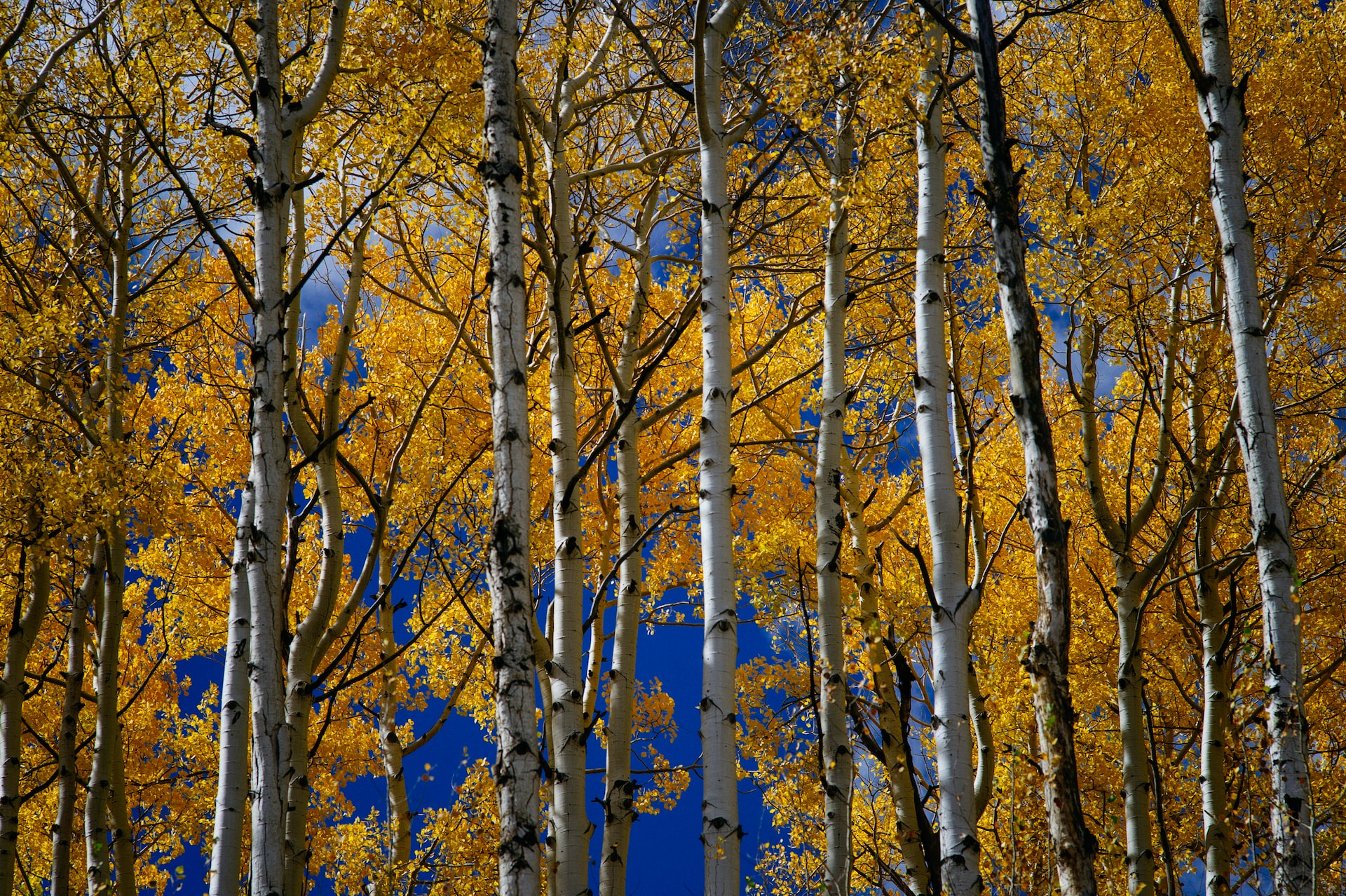Silver Birch trees are one of my absolute favourites.
Their open canopy, small delicate leaves, trailing catkins and of course the beautiful white bark, make them a showstopper in any garden.
They can be susceptible to pests and diseases however, as well as adverse environmental conditions.
So if you have asked the question “Why Is My Silver Birch Drooping?” then read on for answers and solutions.
Birch Dieback
This can happen due to a number of reasons and shows in the demise of branches within the crown at the top of the tree.
This can happen in both young and established trees.
It can also show in the tips of the branches and seems to then work downwards.
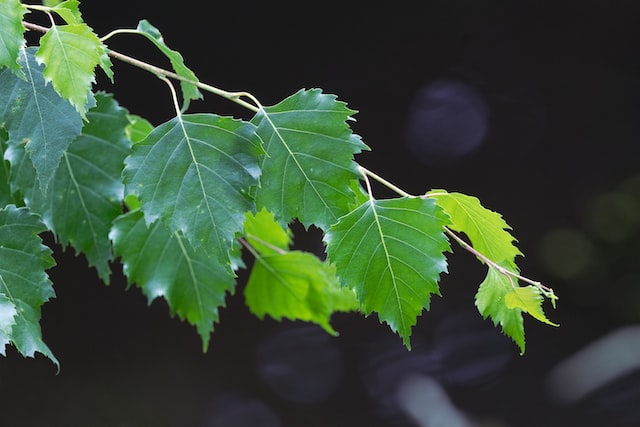
Birch Dieback is usually attributed to the activity of fungus or insects but it can also be caused by environmental factors which create unsatisfactory conditions and weaken the Silver Birch.
All the factors below can contribute to Birch Dieback, so let’s look at each one and explore possible solutions
Not Enough Water
Silver Birch trees may require extra water during unusually hot and dry weather.
This is because their root system is quite shallow.
Their natural environment is among forests and streams, so they can have access to cool water and dappled shade.
When planted by humans, they can often be in dry, sunny and exposed locations.
If a Silver Birch is dehydrated the leaves will wilt and become dry or yellow, and the Birch will start to droop.
How to fix:
- If a Silver Birch has been recently planted or moved, then provide a little extra water for the first year or so it can establish.
- Once established they should be reasonably self-sufficient if your climate has good natural rainfall.
- Silver Birches like soil that is evenly moist, but not wet.
- If the soil feels dry or the leaves look yellow, then provide some extra water.
- In hot dry weather, you may need to do this every day.
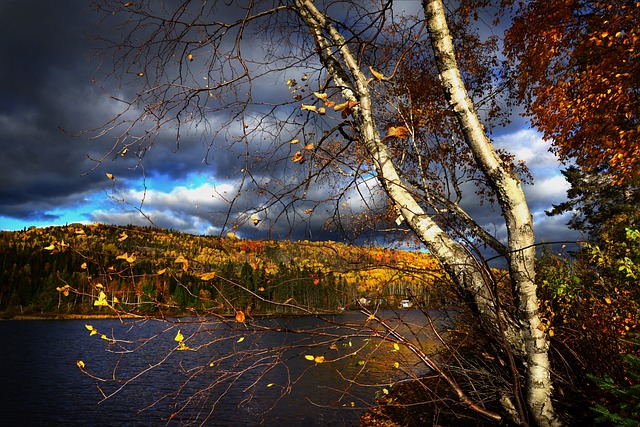
Lack Of Nutrients
Another cause of leaf yellowing can be lack of nutrients.
Silver Birch trees are quite adaptable to many soil types however if you have particularly poor soil and your Birch tree is looking devitalised, then it may be beneficial to provide some extra nutrients.
How to fix:
- Mulching is a great way to naturally and sustainably add extra nutrients to the ground and improve soil quality.
- Apply a layer of mulch around the tree in spring or autumn, leaving space around the trunk.
- What you want is a doughnut shape so the mulch does not touch the bark, as this can encourage fungus.
- Here are some great natural materials that can be used as components of mulch: Lawn clippings, decomposing leaf matter, wood ash, animal manure and coffee grounds.
Root Damage
Silver Birch trees have shallow roots that lie quite close to surface.
In hot weather, without enough soil covering them, they can become overheated,
Exposed roots above the soil line can become damaged, this can seriously weaken the tree.
How to fix:
- If you can see exposed sections of root, cover them with soil or planting to provide shade and protection.
- Avoid digging, raking and mowing around the immediate perimeter of the tree.
- Keep an eye on young children, and pets such as cats and dogs, who may dig or scratch the roots.
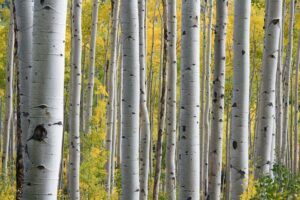
Incorrect Pruning
Approach pruning Silver Birches with extreme care.
They do not react well to pruning, apart from coppicing in their youth (but even this should be done at the correct time of year and in the correct way).
Silver Birches contain large amounts of sap, which can run out of wounds and cause infection.
Incorrectly pruning a Silver Birch can fatally damage the tree by introducing fungus or insects.
How to fix:
- Only prune if you have to, for example to remove dead, dying or diseased branches.
- You can also prune branches that are rubbing against each other, as this can cause an open wound and a potential entry point for infection.
- Do not prune in winter or spring, as you would for other trees. This is when the sap will run out.
- Prune only in late summer or early autumn.
- The sap will not run at this time and there will be less chance of insect egg laying.
- Sterilise all cutting tools before and after use.
- Make clean cuts and remember less is more – prune as little as possible, only what is necessary and keep it under 25%.
- Never cut the top off a Silver Birch.
- Be careful not to accidentally damage the bark, avoid strimming or similar activities around Silver Birches.
Pests
A number of insects can attack the Silver Birch, here we look at the three most common.
Sawfly (Also Known As Leafminer)
These are small black winged insects that are related to wasps but look more like flies.
In the UK they can have a white band on the upper thorax and sometimes a red band lower down.
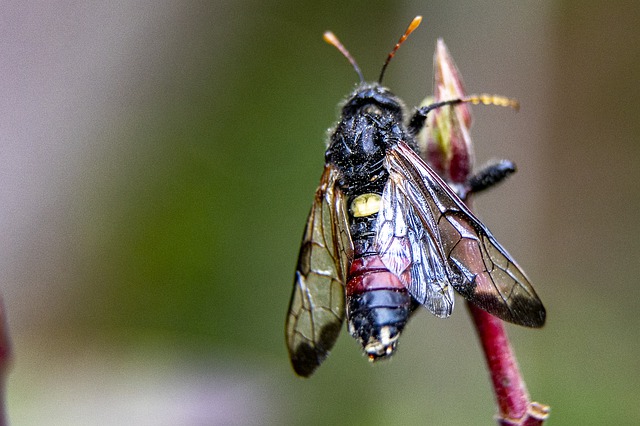
The adults lay eggs in the leaf litter on the ground.
The larvae then hatch and eat the leaves of Silver Birch trees in the spring
They look like caterpillars with a black stripe running the length of the body and small black dots on the side.
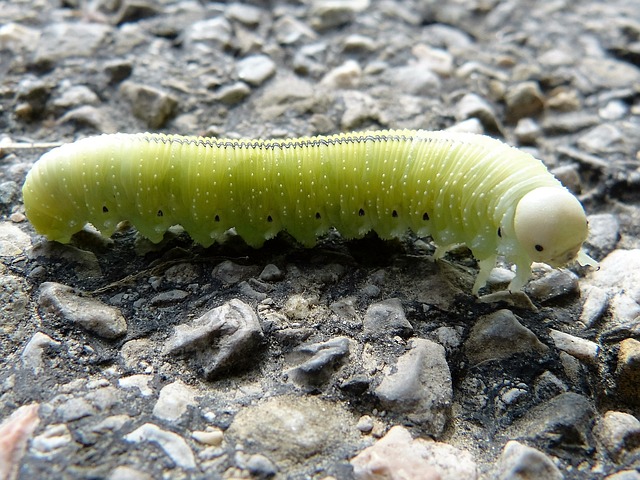
How to fix:
- Although the eaten leaves can look unsightly, the activity of Birch Sawflies or Leafminers should not fatally harm the tree.
- If you do spot the larvae, which are fairly distinctive, you can remove them by hand to limit their consumption.
- Encourage natural predators like birds, small insects and small animals by having a garden that promotes biodiversity.
Bronze Birch Borers
At the time of writing this insect is not known to exist in the UK, however as we have some readers in the United States I will cover the signs and possible treatments.
There is also the possibility that accidental introduction could bring them to the UK, so it pays to know what to look out for.
The Bronze Birch Borer is a brown beetle that can decimate Birch trees.
When in it’s larvae state as a creamy white grub, it bores into the wood just below the bark and eats large areas, causing disruption to the flow of water, sap and nutrients around the tree.
This can cause dieback of branches within the canopy, leaf yellowing and loss, and the eventual death of the tree.
How to fix:
- Look for raised wrinkled bark that looks like something has been tunnelling around just below the surface.
- You may also see exit holes where the Borer has turned into a beetle and left the tree.
- If you suspect your Silver Birch tree has an infestation, check other trees in the area.
- If many are affected it may be a good idea to contact a professional who can apply a controlled chemical treatment.
- If the canopy shows more than 50% dieback it is likely that the tree cannot be saved and the best option is to remove it.
- Be careful when collecting Silver Birch firewood from different areas, as the Borer can travel within the wood and may contaminate new areas.
Aphids
These small green insects can feed on Silver Birch leaves and shoots by sucking out the sap.
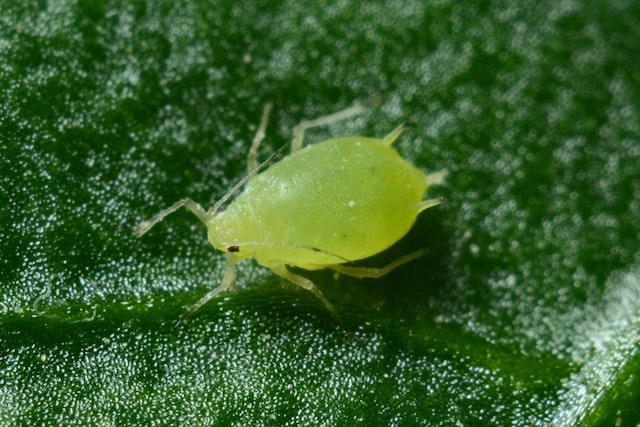
As a waste product they produce a clear sweet sticky substance called Honeydew.
This can attract a black sooty mould that sticks to the leaves.
How to fix:
- Although leaves and buds can suffer damage, aphids are unlikely to cause severe harm to a Silver Birch tree.
- Their effects are mainly unsightly, and the black sooty mould can interfere slightly with sunlight absorption.
- You can wipe off the mould and the aphids themselves with a mild dish soap solution.
- Encourage natural predators like ladybirds by having a high level of biodiversity in your garden.
Fungus
There is quite a wide array of fungi that can attack the silver birch unfortunately.
For simplicity, they can be categorised into fungi that affect either the leaves, the wood and bark, or the roots.
Here we will look at the most common.
Leaf Fungi – Anthracnose Leaf Spot
Anthracnose Leaf spot is a fungal disease that can be caused by a number of different pathogens such as Marssonia, Gloeosporium Betularum or Discula Betulina.
This can occur after heavy rain in the spring and seems to affect mostly new growth.
Brown to black dots start to appear on the leaves, the tissue then dies leaving ragged holes.
Leaves can also curl or become distorted
The fungus can also affect the wooden parts of the Birch and cause cankers (areas of dead tissue).
How to fix:
This type of fungus needs wet conditions to grow so a dry period of weather should halt the spread naturally.
- If you do see the signs above you can carefully prune out the infected parts of the Birch and dispose (not on the compost heap).
- Maintain good airflow in and around the Silver Birch by regularly clearing debris from the base.
- If you follow these steps the Silver Birch is usually able to recover well.
Leaf Fungi – Rust
This leaf fungus presents as an orange or yellow powder or pustules on leaves.
It is quite common and should not severely damage an established tree, however smaller trees and saplings can be more greatly affected.
It is unsightly however and steps can be taken to halt the spread.
How to fix:
- Wearing gloves, gather up all fallen leaves as these can harbour the spores.
- Burn or dispose of (not in the compost heap).
- Clean all tools used, and wash your gloves to reduce the chance of further contamination.
- Maintain good airflow around your Birch tree by regularly clearing weeds and overgrown plants from the base.
- There are copper based fungicides that can be applied to the new leaf buds in the case of severe infection.
Wood Fungi – Cankers
There are a few different fungi that can cause cankers on Silver Birch trees.
Cankers are areas of swollen, distorted or sunken dead tissue.
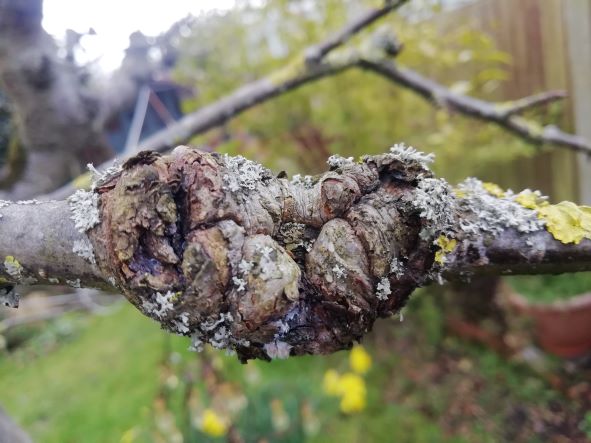
They are usually caused as a pathogen enters the bark through a wound causing infection.
Cankers can grow to encircle a branch, when this happens it can cut off the circulation beyond the canker causing that branch to die.
How to fix:
- It is best to carefully prune out any branches with cankers, provided they are not part of the main stem (remember – never take the top off a Silver Birch).
- Cut at least 10cm below the canker, to where there is healthy wood.
- Use sharp cutters, and sterilise them before and after use.
- Burn or dispose of the branches (not in the compost heap).
- Try to avoid damaging your Silver Birch bark to minimise chances of infection.
- Watch out for cats scratching the tree, and avoid strimming in that area.
- Check for branches rubbing together and carefully remove.
- If the canker affects the main trunk, is large and low down, then the tree may not be savable and you may need to remove it.
Wood Fungi – Birch Polypore
This is a type of Shelf or Bracket Fungi or “conk” that is actually very beautiful.
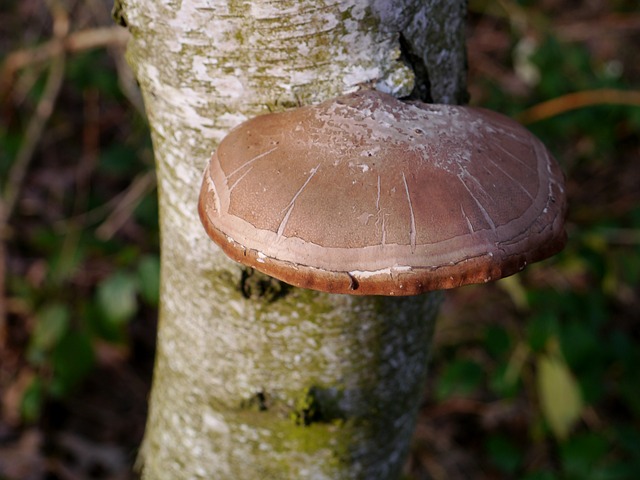
Birch Polypore is edible, has many medicinal properties and can also be used as fire tinder.
Care must be taken however as Polypores on other trees can be poisonous so never eat anything you are unsure of.
They form in a hoof shape which then flattens out.
How to fix:
- Although the Birch Polypore grows mainly on decaying wood, it can also grow on live trees, sometimes for years.
- Once the tree is infected it cannot be cured as the fungus lives inside the tree and the shelf fruiting bodies are the external parts that you will see.
- If the fungus shelves are mainly on one branch then you can remove this in an attempt to slow the decline.
- If the shelves are on the main trunk then it is likely that over time the tree will perish and rot.
- In a large established tree this may take a long time so you may decide to leave it alone, but be aware that the fungus will gradually destabilise the structure of the tree and at some point it may fall.
- Depending where the tree is situated this could present damage to property or danger to life.
- If this is the case then removal of the tree is best.
Root Fungi – Armillaria Root Rot (Honey Fungus)
This fungus can infect woody ornamental trees such as Silver Birches and Laburnums at the roots and trunk base.
It will often lead to the death of the plant, and can spread underground to other plants.
You may see white fungal growth under the bark at ground level.
The bark then starts to crack, seep and decay.
There may be a strong mushroomy smell.
This is sometimes accompanied by honey coloured mushrooms near the base of the plant in the autumn.
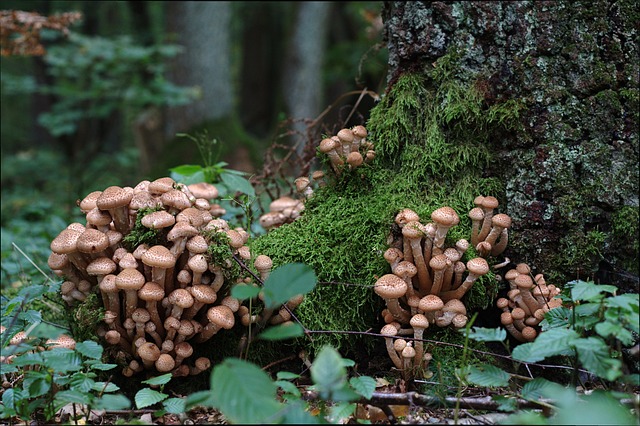
How to fix:
- Honey Fungus is incurable, so infected trees should be removed and safely disposed of (not in the compost heap).
- Sanitise any garden tools or gloves used, and wash your hands.
- The surrounding soil can be turned over to break up the rhizomorphs (the underground black fungal structures or “bootlaces”).
- Some gardeners bury plastic liner in the soil around affected areas to stop the spread to other trees.
- Prevention is better than a cure so maintain good ventilation around the base of your plants.
- This will promote plant health and natural resilience.
Final Thoughts
As we have seen, Silver Birches do best when their environmental conditions are close to their natural environment.
Natural Silver Birch populations do much better than ones that have been planted by humans.
They are beautiful trees but can be affected by various factors.
If you have any issues with your Silver Birch that are not covered in this article, then drop me a message and I will do my best to help.

